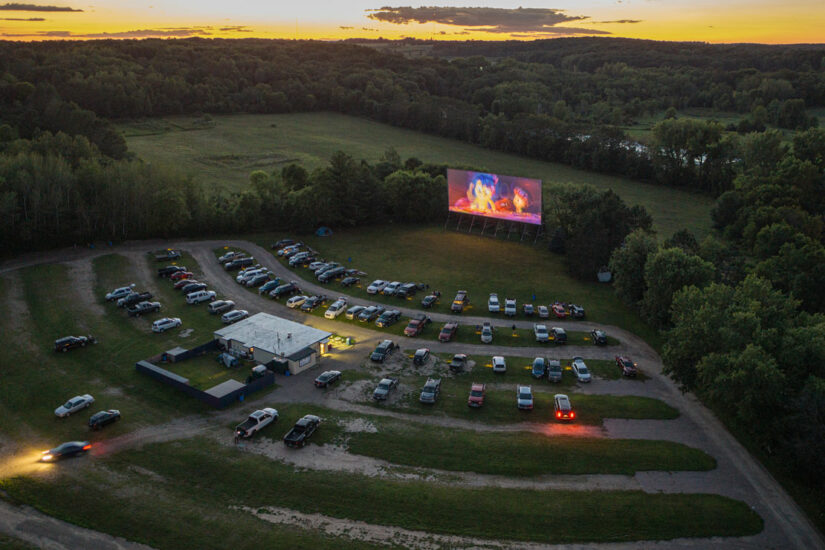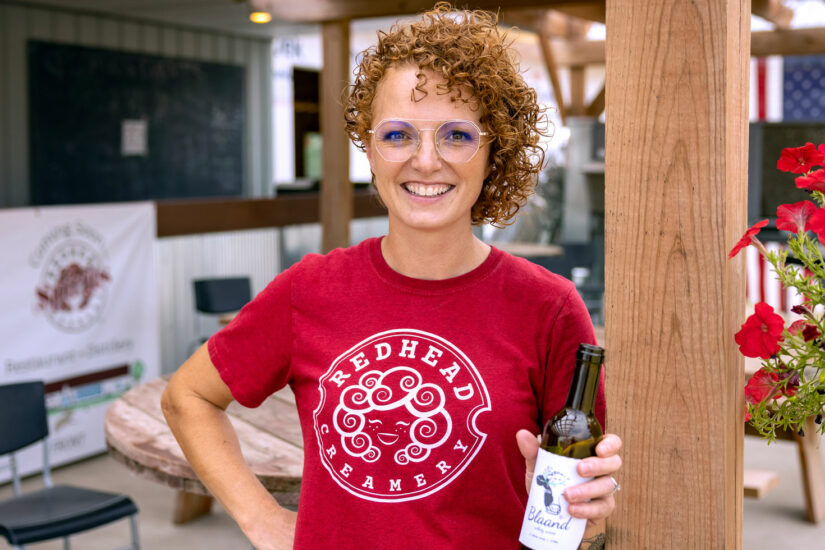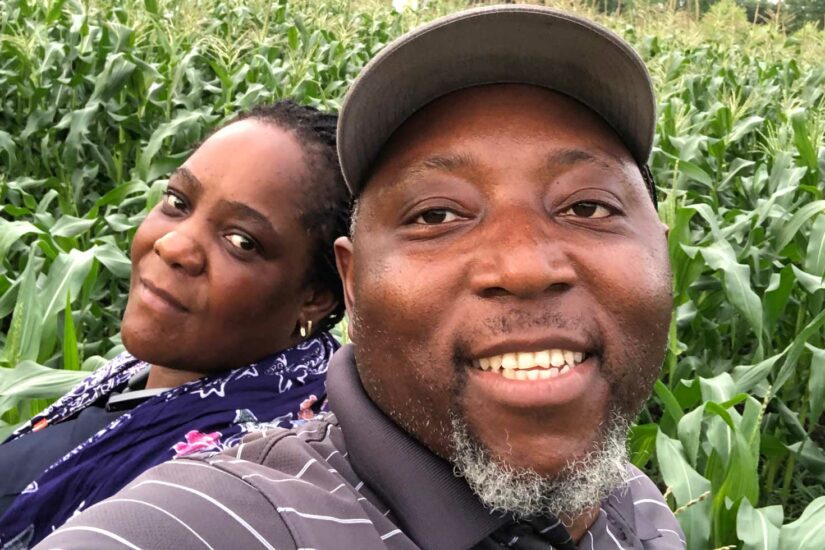Adrienne Benjamin
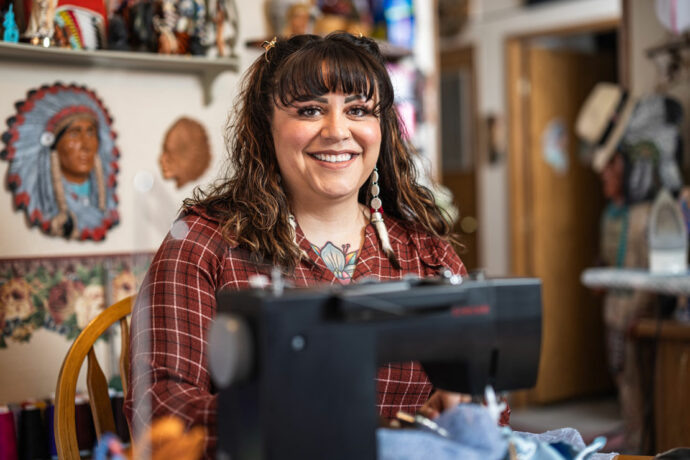
Anishinaabe artist, equity advocate, cultural educator
Chiminising (Isle), Misizaaga’iganing (Mille Lacs)
By Maria Surma Manka | Photography by John Linn
“I have a hard time thinking about my work as a business,” said Adrienne Benjamin, Anishinaabe artist, equity advocate and cultural educator. “My work is my art, it’s my thoughts. It’s all the values, trust and stories the elders instilled in me … I feel lucky doing the work I do and calling it a business.”
Benjamin, a member of the Mille Lacs Band of Ojibwe, designs and creates ribbon skirts, beaded fedoras, earrings and other forms of art. She is especially renowned for her jingle dress creations worn by indigenous dancers throughout the United States and Canada.
Jingle dresses are an essential element of the Jingle Dress Dance and are believed to have originated with the Mille Lacs Band of Ojibwe in the early 1900s. A generations-old story says that when a girl fell sick, her father had a vision of a dance and a dress that would cure her. The dress was adorned with hundreds of metal cones that jingled when the wearer danced; the father taught the daughter the sacred dance from his vision, and the girl recovered.
Today, Jingle Dress Dances take place across the continent and on the competitive powwow circuit, including at the Mille Lacs Band of Ojibwe Grand Celebration Powwow in Hinckley. The dance, though it has several variations, is associated with the healing of the body, mind and community.
- Jingle dresses are sacred ceremonial items. “When I get an order, I ask respectfully about the person’s use for it and their experience as a dancer,” Benjamin explained. Hats, earrings, shirts, and some skirts may be sold to the public, though certain pieces aren’t for everyone.
- Benjamin made her first jingle dress when she was 13. She cut up her grandfather’s shirt to study how the garment was constructed. “One of the first jingle dresses I made had a collar because my grandpa’s shirt did!” laughed Benjamin.
- Growing up around sewers, Benjamin was mentored by a woman who owned a sewing business. “She gave me a crash course in three days on how to make an applique for a jingle dress. I drew it, I sewed it, and it was a ‘wow’ moment for me.”
- As her talent grew, Benjamin received requests for blankets and dresses. It was still a side hustle, however; at the time, Benjamin was a full-time educator, shaping children’s arts programs focused on the reclamation of native culture and language.
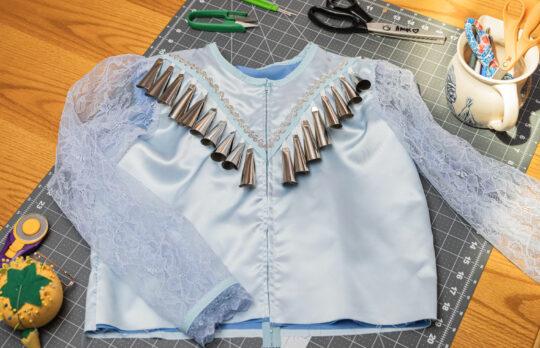
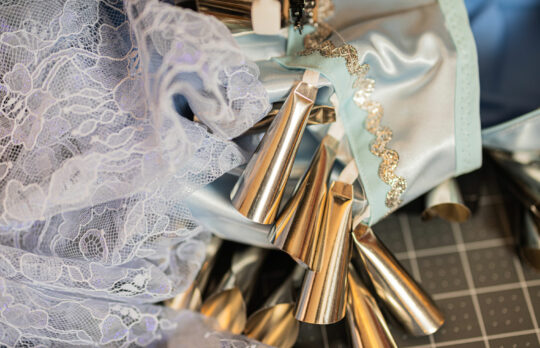
- When the COVID-19 pandemic hit, her work in the schools was put on hold. “We grow up thinking art can’t be a full-time focus, but the pandemic was when I decided to see if my art could support me full time.”
- Today, jingle dresses are about 80 percent of Benjamin’s work, with beaded fedoras about 15 percent and assorted items, such as earrings, making up the rest.
- Benjamin’s jingle dresses are commonly made from calico or bridal satin. She creates both traditional jingle dresses and contemporary ones that might have sequins or neon colors.
- “I work with the dancer on the type of materials, look and color they have in mind. But I keep my own artistic concept,” she explained. “I use a pattern book as my base, get the dancer’s measurements, and tune the dress to that person.”
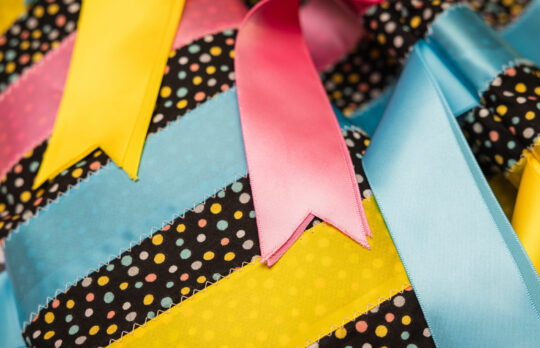
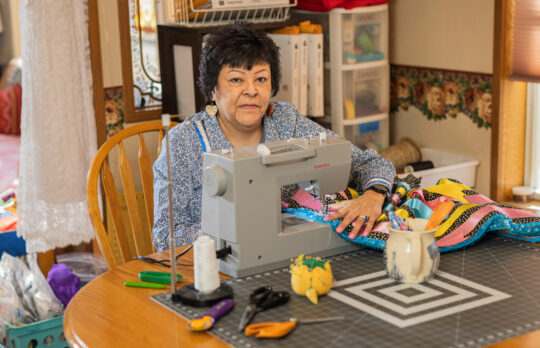
- Originally, jingles were snuff tin tops rolled into a cone shape with pliers or a machine. Today, material and rolling methods vary. Benjamin prefers pre-rolled cones ordered in bulk. “I’d say my dresses have 250 to 300 jingles on average, but it’s whatever looks good. The most time-consuming part is attaching them to the dress.”
- Benjamin employs her teenage daughter and mother. Her daughter helps with sewing the ribbon lines and crimping jingles, while her mother finishes dresses or ribbon skirts with pockets and details. “I spend a weekend or two with my mom designing, then [she and my daughter] take it from there. I create jingle dresses order-by-order, but I’ll also do a drop of 12-15 ribbon skirts on social media and they sell out immediately.”
When asked about her plans for the future, Benjamin said: “I’m honored that jingle dress champions are asking for my work. When that happens, that is the Super Bowl-level version of my work out there in a pow wow arena.”
Art & Advocacy
Benjamin’s art and advocacy permeates nearly every aspect of her life. As the mother of an adult daughter with cerebral palsy, she fought to ensure her daughter Bella had educational opportunities and support in school. “I was the person everyone hated to see at the school board meeting,” said Benjamin. “But I had to fight for Bella; I had to push for things like wheelchair access.”
The years of advocacy lit a fire in Benjamin, leading to work in the schools with arts and cultural programs. Soon after George Floyd was murdered, an elder introduced Benjamin to Minnetonka, the Minnesota-based footwear manufacturer and retailer known for moccasins.
“Minnetonka was looking to hire someone to help lead their work around reparations,” said Benjamin. “I was skeptical at first … I wasn’t sure I wanted that role.”
A fourth-generation family business, Minnetonka was finally apologizing and acknowledging its appropriation of Native American designs. “The apology is important, but the company wasn’t sure what to do next,” Benjamin said. “I was impressed with the owners. They could’ve just made an apology and continued with business as usual. But they wanted to do more and do right.”
Since 2020, Benjamin has worked with Minnetonka on their support of Indigenous artists and customer education. “There were lots of appropriated items and designs, and now native artists are redesigning them,” explained Benjamin. “Minnetonka is learning about what’s been appropriated and how they can change that and educate others. Their apology and work need to be as loud as the history of disrespect.”
Benjamin fostered collaborations with local native artists to design lines of footwear, and has done two launches of her own beaded hats with Minnetonka.
This year, the Minnetonka thunderbird design, a Native American symbol of power and strength, has been redesigned by artist Lucie Skjefte, a Minneapolis-based designer and citizen of the Red Lake Nation. It launched at New York Fashion Week in February. “Lucie owns the thunderbird design; it’s in her name and Minnetonka licenses her work,” noted Benjamin. “It’s not something they’re taking.”
Benjamin sees a long path ahead for her advocacy work; Minnetonka will continue its reparation work in partnership with Benjamin, and she has been asked to counsel other brands, such as Stitch Fix.
“It doesn’t have to be complicated for a business to do the right thing,” she said. “It starts with acknowledgement, then apology, then changed behavior. It excites me about what business can be.”
Related Articles
Long Prairie Drive-in Theater
This magical Minnesota landmark makes it worth the drive to watch a movie. Read More
Redhead Creamery Spirits
Redhead Creamery is diversifying its dairy and entering a new market: distilled spirits. Read More
Better Greens
With the right mix of science, creativity and caring, Montrose-based Better Greens, LLC, is meeting a culinary demand in our diverse region. Read More
